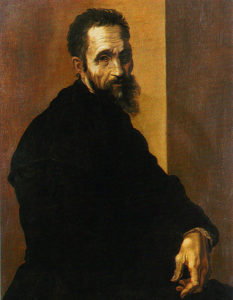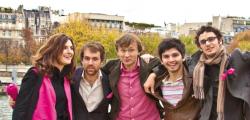Top 10 Facts About The Sistine Chapel
The Sistine Chapel is the Pope’s official residence in the Vatican. It was built in the 1470s under Pope Sixtus IV, from whom it derives its name. The Chapel sits in the Vatican, the headquarters of Catholic the Church and serves as a point of religious and functional papal activity.
The Sistine Chapel is one of the most popular places to visit in Rome. Its functionality and look is one of a kind. Here are the top 10 facts about the Sistine Chapel that might convince you it’s worth visiting soon.
1. The papal conclave is in the Sistine Chapel
The Sistine Chapel hosts the papal conclave, during which a college of cardinals of the Catholic Church gather to vote in a new pope. This period is somewhat pensive for the Catholic faithful as they await the election results. White smoke out the special chimney on the chapel’s roof relays the results, with white smoke indicating the election of a pope and black smoke indicating that no candidate has been found. The selected candidate usually has to receive a two-thirds majority.
2. The Sistine Chapel is akin to a fortress
The Sistine Chapel was designed by Architect Baccio Pontelli, whose work speaks volumes. The Chapel boasts high and sturdy walls, meant to protect the Vatican from any kind of external attack. Construction began in 1475 and was completed in 1481.
3. The Sistine Chapel is the Pope’s personal chapel
The Sistine Chapel is associated with the Apostolic Palace, which hosts the official residence of the Pope. The Chapel was meant to be the Pope’s personal Chapel when built. To date the chapel serves this purpose.
4. The Sistine Chapel is rather drab looking from the outside
An aerial view of the Sistine Chapel does not do the stunning piece of architecture any justice. The view reveals a plain structure devoid of any of the beauty of the frescoes and architecture found on the inside. What is written about the Sistine Chapel and available pictures of it will prompt entry into it, revealing majestic walls and incredible ceilings- nothing like the plain external look that the Chapel offers from the outside.
5. The Sistine Chapel ceiling’s most famous panel might depict a human brain!
Michelangelo’s take on God giving humans intelligence is depicted in one of his paintings at the Sistine Chapel, where God and Adam are inside a shape resembling a brain.
It is said that Michelangelo was displaying his knowledge of the human anatomy. This display is replicated in a number of other panels in the Chapel.
6. The Sistine Chapel is modeled after the Temple Solomon of the Bible built
The Bible records King Solomon’s directive given by God to build a Temple more than forty meters long and as high as a seven-storey building. The Sistine Chapel’s dimensions fit the description of the temple of Solomon. It has been argued however that these dimensions were the standard renaissance building measurements.
7. The Sistine Chapel is a tourist magnet
Imagine human traffic in the Sistine Chapel that comes up to about 25,000 people daily and five million people a year! The Sistine Chapel deserves the title ‘tourist magnet’. The frescoes by Michelangelo are a particular attraction, especially the ceiling.
With such wild numbers came a newfound problem- The Vatican had to find a way to protect the chapel from damage from dust, carbon monoxide and sweat, as well as its sanctity. While not much could be done about the tourist numbers, they are vacuumed and cooled before entry so that the frescoes were not damaged by humidity.
Tourists can however get a close- up view of the frescoes through a virtual tour, as the number of visitors or crowds don’t give a chance for a live close- up.
Tourist activity at the Sistine Chapel brings in an annual revenue of around €80 million or £70 million a year.
8. Michelangelo wasn’t interested in working on the Sistine Chapel
Michelangelo is famous for sculpting, architecture, poetry and painting. He however didn’t consider himself that great a painter when he was commissioned to paint at the Sistine Chapel. He took on the work only because it was the Pope’s request.
With his desire to not paint the Sistine Chapel and still trying to get out of it, Michelangelo approached the Pope when a large portion of his work became moldy, asking to be dismissed for not being up to the task. The Pope however had him simply redo the damaged part.
Quite ironic that Michelangelo’s work at the Sistine Chapel is a showstopper despite his misgivings.
9. The Sistine Chapel is most famous for Michelangelo’s frescoes
The paintings in the Sistine Chapel are extensive. From the depiction of God that was the first of its kind, the human anatomy embedded in the paintings, and to Noah’s ark, Michelangelo can be said to have really gone in with his work at the Sistine Chapel.
Painting the Sistine chapel, especially the ceiling took a lot of skill- Michelangelo painted the ceiling standing upright, an arduous task. The painter did talk about the strain of the work to his friend Giovanni da Pistoia and even went on to write an unflattering poem about it.
However his pain and hard work paid off as the frescoes are ranked as important innovations of High Renaissance art, drawing in people from all over the world.
10. Sistine Chapel’s frescoes features nudes
The many frescoes at the Sistene Chapel have been controversial as some of them depict characters in the nude. Pope Pius IV ordered that they are covered with fig trees and loincloths strategically so as to still keep the art and maintain decency. This was in the 1560s.
The modifications were made then but the frescoes went back to their original state when they were being restored in the 1980s-1990s.
A visit to the Sistine Chapel will not only afford you the opportunity to see Michelangelo’s frescoes but also works by many Florentine Renaissance masters such as Perugino, Pinturicchio, Sandro Botticelli, Domenico Ghirlandaio, and Cosimo Rosselli. You however will not be able to take photos of the Chapel, and you will have to dress appropriately, covered up or you may be turned away.
Planning a trip to Paris ? Get ready !
These are Amazon’s best-selling travel products that you may need for coming to Paris.
Bookstore
- The best travel book : Rick Steves – Paris 2023 – Learn more here
- Fodor’s Paris 2024 – Learn more here
Travel Gear
- Venture Pal Lightweight Backpack – Learn more here
- Samsonite Winfield 2 28″ Luggage – Learn more here
- Swig Savvy’s Stainless Steel Insulated Water Bottle – Learn more here
Check Amazon’s best-seller list for the most popular travel accessories. We sometimes read this list just to find out what new travel products people are buying.



















